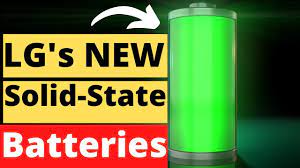
Breaking News
 This roof paint blocks 97% of sunlight and pulls water from the air
This roof paint blocks 97% of sunlight and pulls water from the air
 'Venomous' Republican split over Israel hits new low as fiery feud reaches White House
'Venomous' Republican split over Israel hits new low as fiery feud reaches White House
 Disease-ridden monkey that escaped from research facility shot dead by vigilante mom protecting...
Disease-ridden monkey that escaped from research facility shot dead by vigilante mom protecting...
 Hooters returns - founders say survival hinges on uniform change after buying chain...
Hooters returns - founders say survival hinges on uniform change after buying chain...
Top Tech News
 The 6 Best LLM Tools To Run Models Locally
The 6 Best LLM Tools To Run Models Locally
 Testing My First Sodium-Ion Solar Battery
Testing My First Sodium-Ion Solar Battery
 A man once paralyzed from the waist down now stands on his own, not with machines or wires,...
A man once paralyzed from the waist down now stands on his own, not with machines or wires,...
 Review: Thumb-sized thermal camera turns your phone into a smart tool
Review: Thumb-sized thermal camera turns your phone into a smart tool
 Army To Bring Nuclear Microreactors To Its Bases By 2028
Army To Bring Nuclear Microreactors To Its Bases By 2028
 Nissan Says It's On Track For Solid-State Batteries That Double EV Range By 2028
Nissan Says It's On Track For Solid-State Batteries That Double EV Range By 2028
 Carbon based computers that run on iron
Carbon based computers that run on iron
 Russia flies strategic cruise missile propelled by a nuclear engine
Russia flies strategic cruise missile propelled by a nuclear engine
 100% Free AC & Heat from SOLAR! Airspool Mini Split AC from Santan Solar | Unboxing & Install
100% Free AC & Heat from SOLAR! Airspool Mini Split AC from Santan Solar | Unboxing & Install
 Engineers Discovered the Spectacular Secret to Making 17x Stronger Cement
Engineers Discovered the Spectacular Secret to Making 17x Stronger Cement
New all-solid-state battery holds promise for grid storage and EVs

A newly developed architecture places these two innovations within one device to form a solid-state battery that is safe, long-lasting and has the potential to store vast amounts of energy.
For many years, scientists have been allured by the game-changing energy density silicon promises next-generation batteries, but bringing it into the mix has its challenges. The idea is to incorporate or entirely replace the graphite used as the anode with silicon to potentially store as much as 10 times the lithium ions. The trouble is silicon causes the liquid electrolyte to quickly degrade and the battery to quickly fail, but the authors of this new study believe the solution may lie in using a solid-state electrolyte instead.



